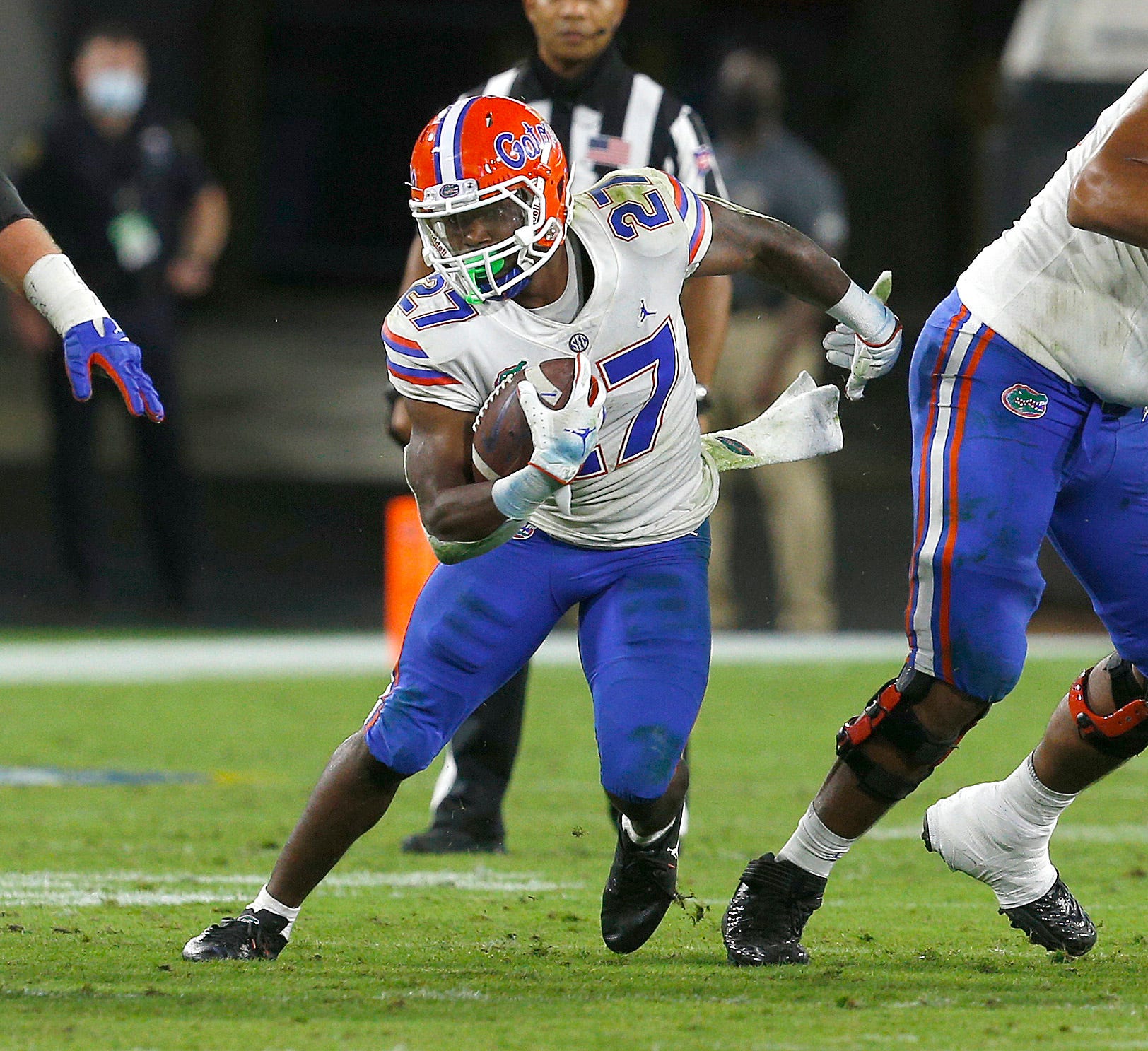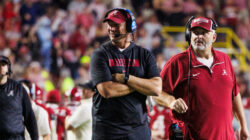
At Florida, a deep running back room could make all the difference in 2021
Florida was an offensive juggernaut in 2020, finishing in the top 4 nationally in S&P offensive efficiency and top 10 in scoring offense. What the Gators weren’t offensively was balanced.
Florida’s huge offensive numbers came almost exclusively on the back of a prolific passing attack. Florida finished the season ranked No. 1 in the country in passing offense, paced by Heisman finalist Kyle Trask and the generational talent of tight end and mismatch nightmare extraordinaire Kyle Pitts. A stable of wide receivers, including first-round draft pick Kadarius Toney, only augmented the danger of the Gators’ passing game.
The passing attack was so elite it didn’t much matter that they were basically a pedestrian team running the football. The Gators ranked 96th nationally in rushing offense and 80th in yards per rush (4.3), hardly impressive numbers. But as Florida opens the 2021 season, Florida junior running back Dameon Pierce told the media that Florida’s issues running the ball were more about style than substance.
“Was it frustrating not running the ball more? It was, a little bit. But we always felt we were capable. We also had a generational talent at quarterback and maybe the best tight end in the history of college football,” Pierce said. “I think what we did still made our offense successful.”
Pierce is certainly right about two things. First, Florida’s offense worked just fine emphasizing the pass game a season ago. Second, the talent in Florida’s running back room is more than capable. The running back room is as deep and diverse as any in college football.
Pierce, a bruising runner who has plenty of giddyup when he gets to the second level, led the team in rushing (503 yards) and has 1,232 yards and 10 touchdowns in his career. The lone senior in Florida’s running back room is Malik Davis, a versatile 3rd-down type of back who adds 47 career receptions for over 500 yards to his nearly 1,000 yards rushing in his career. Davis can line up all over the field and a UF assistant told me this summer Florida will search for ways to get him the football even if he isn’t at running back.
Nay’Quan Wright, an All-SEC freshman selection a season ago, is another player with tremendous versatility. The Miami native has excellent elusiveness and good speed and averaged an impressive 11.5 yards per reception, hauling in 19 of 23 targets a season ago. With that trio alone, Florida would feel comfortable with its running back room. But Dan Mullen and his staff worked the transfer portal hard over the past 2 seasons and have filled out the position with two former 5-star talents in Lorenzo Lingard (Miami) and Demarkcus Bowman (Clemson).
In Lingard, the Gators have a former top 25 national recruit with breakaway speed on the second level who, according to multiple assistant coaches, is finally healthy after battling leg injuries the past 2 years. It’s no secret the Gators are looking for breakaway playmakers as they attempt to replace Pitts, Toney and Trevon Grimes. Finding a way to maximize Lingard’s speed has to intrigue Mullen and the Florida staff.
Meanwhile, Bowman, another former top 25 national recruit, is projected as Florida’s breakout player in multiple preseason publications and, given the prodigious hype that followed him to Clemson, it’s easy to see why. A freakish blend of speed and power, Dabo Swinney conceded Bowman would have played a big role in Clemson’s offense in 2021 had he not been homesick and wanted to return closer to his Lakeland family home. Cleared to play immediately, he’ll fight it out for carries in a running back room that features 4 blue-chip recruits and Davis, a former All-SEC freshman team selection.
In the age of instant gratification and the transfer portal, it’s fair to wonder how such a deep, talented running back room will coexist. “Everybody wants the ball and there’s only one ball,” Mullen said last week. But he said he’s excited at how his running back room has responded in a healthy way to competition.
“One of the things about those five guys is that they have really bought into what we’re doing and the fact they know our job is to put guys in the best position to be successful on the field,” Mullen said.
This year, that likely means spreading the wealth. It also likely means utilizing a number of different looks to make sure the Gators optimize the unique strengths of perhaps their strongest skill position group.
“I wouldn’t be shocked to see us with multiple running back packages this year, with more than one (running back) on the field at a time a little more than we’ve done maybe in the past,” Mullen told the media last week. “When you get into play count, the ability to stay healthy, the ability to stay fresh by rotating a bunch of guys through, it makes sense and our guys have really bought into that.”
That excites Pierce, who smiled wide when told of Mullen’s intentions.
“You know that gets me going,” Pierce told the media with a grin. “We get more plays. Plus, we’re fresh. You can’t go 80 yards with dead legs. It’s good to be fresh out there.”
It will be. It will also be good to have the threat of an athletic, dual-threat quarterback in Emory Jones, who Pro Football Focus ranked as the No. 1 rushing quarterback in the country a season ago based on success rate. Couple the reality of defenses keying on Jones’ ability to run with the SEC’s biggest offensive line pound for pound, and Florida’s running backs should have a fair number of opportunities to make plays in space.
That will be a change from the past 2 seasons, when the Gators looked to pass first and if that failed, pass second. But Mullen, for so long masterful at catering his offenses to his personnel, knew what he was building when he signed Wright and hit the portal for the likes of Lingard and Bowman. This is one of the deepest running back rooms in America — and perhaps the biggest set of difference-makers the Gators have in 2021.
Neil Blackmon covers Florida football and the SEC for SaturdayDownSouth.com. An attorney, he is also a member of the Football and Basketball Writers Associations of America. He also coaches basketball.







